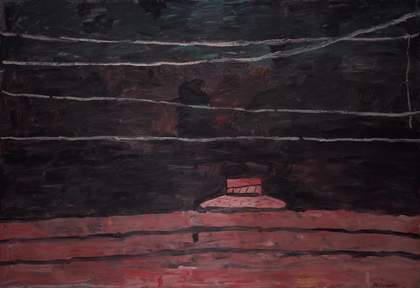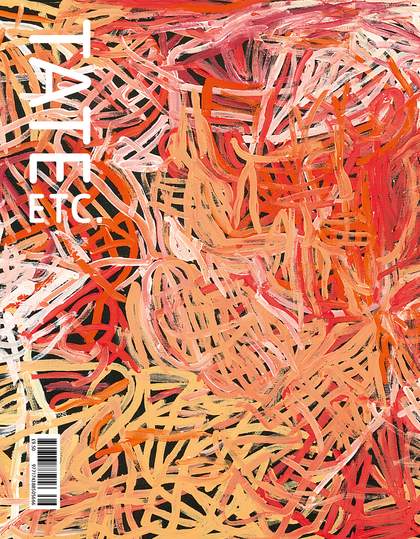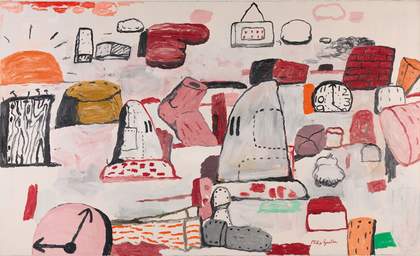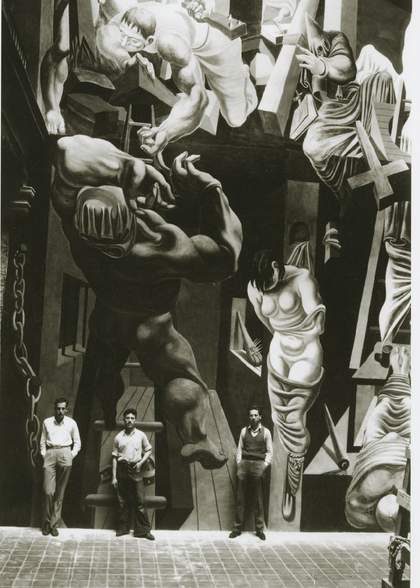
Philip Guston
Hat (1976)
Tate
An artist has got to be careful never really to arrive at a place where he thinks he’s at somewhere. You always have to realise that you’re constantly in a state of becoming. And, as long as you can stay in that realm, you’ll sort of be alright - Bob Dylan
The works of Philip Guston that have influenced me the most are his simple line drawings from the late 1960s (Loaded Brush 1966) and small still lifes from the early 1970s (Two Rocks 1972). They are straightforward, no frills, no virtuosity and, to me, formally perfect. The drawings remind me of a form of calligraphy. I find Hat 1976 compelling in a different way.
Guston had been known as an abstract painter but, in 1970, exhibited a group of figurative works at Marlborough Gallery in New York. The critical reaction was overwhelmingly negative. Responding to the criticism and questions about his change in style, he said: ‘I got sick and tired of all that Purity. [I] wanted to tell stories.’ Hat is a dark story.
The stark simplicity of Hat’s composition makes it all the more foreboding. The titular hat seems as if it could be hovering above the fence like a flying saucer. Although the hat is the focal point, it’s the open space that feels threatening, evoking feelings of solitude, loneliness, abandonment and of being lost. When I look at this work, it’s the darkness that envelops me.
I admire Guston’s fortitude. While other artists were looking for something ‘new’, Guston reached for the opposite: ‘I imagine wanting to paint as a cave man would ... I should like to paint like a man who has never seen a painting.’ It’s this uncomplicated, honest, direct purity, what I call ‘primal essence’, that attracts me. Critics of Guston’s late figurative works use words like ‘funky’, ‘cartoonish’, ‘funny’, ‘eccentric’ and ‘dumb’, all meant as severe criticism, but, for me, these qualities are pluses.
I sense Guston’s total absorption in the making of Hat. The process of discovery and escape is one of the reasons that we (artists) work. I relate to Guston when he said: ‘I feel that I have not invented so much as revealed, in a coded way, something that already existed.’
Guston’s influence on and inspiration for my own art is immeasurable. He takes the clumsy and awkward and makes it sublime. The way his works make me feel is exhilarating. I strive for that same spirit, soul, vibe, allure, charisma, essence and presence in my own work. Guston asks: ‘What would happen ... if I eliminated everything except just raw feeling’?
All I can do is try.
Hat was presented by the American Fund for the Tate Gallery, courtesy of a private collector in 1996. A selection of lithographs by Philip Guston is available to view by appointment in the Prints and Drawings Room at Tate Britain.
Ron Nagle is an artist who lives in California.



